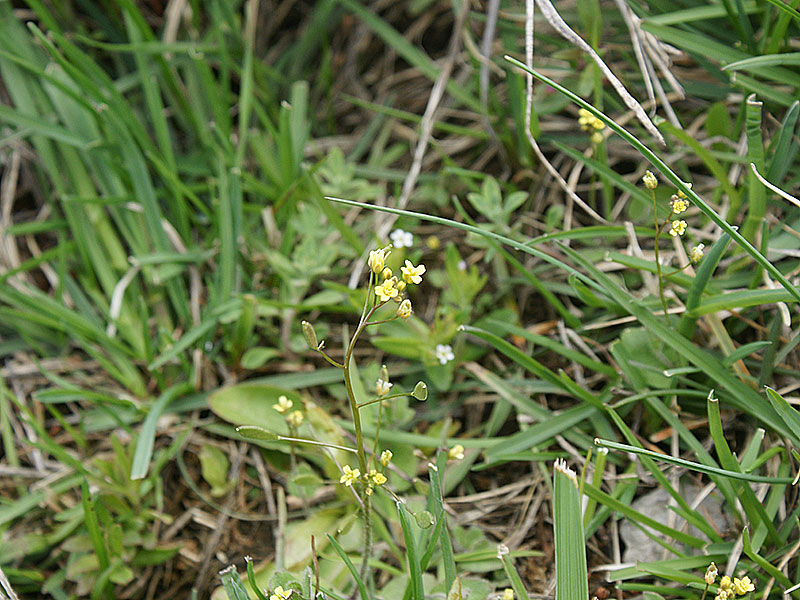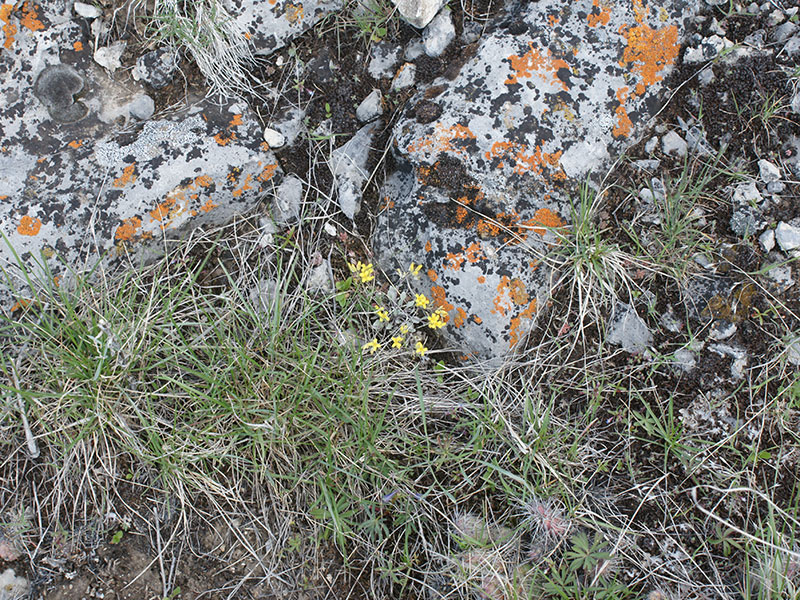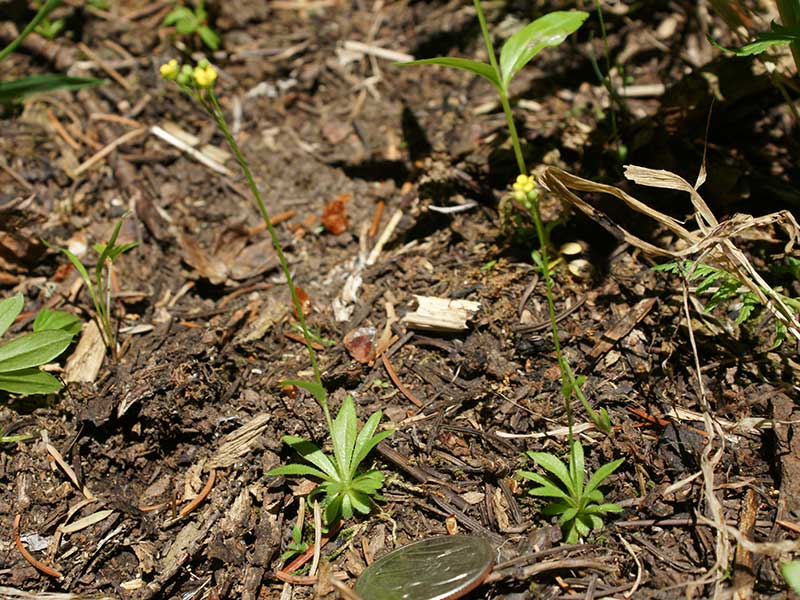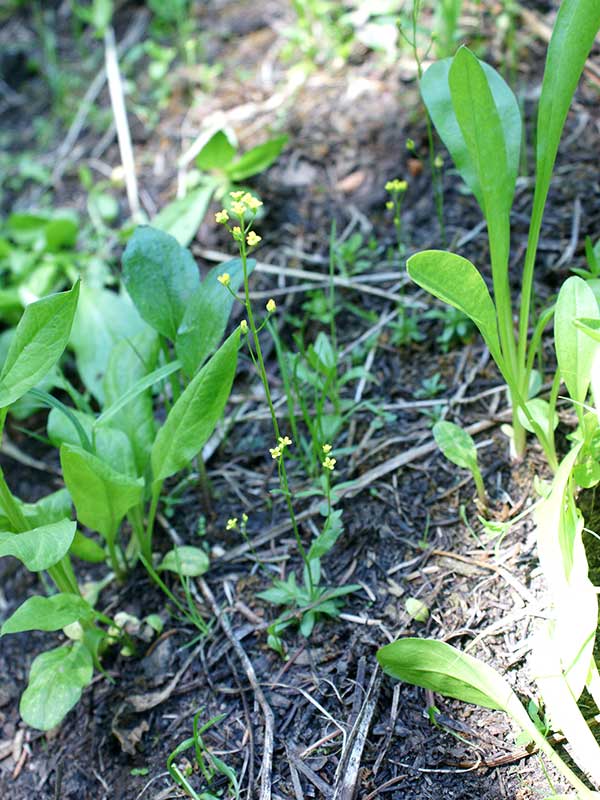Draba nemorosa / yellow whitlow-grass
- teeny, often silvery plant with teeny yellow 4-petal flowers
- rosette leaves have trichomes even when not really silvery
- annual ephemeral seen soon after snowmelt
- usually exposed near or on rocks, dry slopes
- flat, elliptical seed capsules
Also known as: woodland draba, yellow vernal flower, woods draba
Synonym: Draba lutea
Of all the generally ignored plants on this site, Draba nemerosa (or nemorosa) ranks right up there. Indeed, there seems to be more attention to this poor thing from molecular biologists and biochemists than from ecologists and naturalists. That, undoubtedly, reflects the fact that it is small, easily overlooked and ephemeral. But really, it is sort of cute in its short life.
So… Draba nemorosa is a small annual to be found on dry hillsides, often by rock outcrops. It has basal leaves from which the flowering stem emerges. Those many or may not be in a rosette, but they are small enough that unless you really care, you will be hard pressed to tell. The leaves can get up to 1″ long, and they are densely hairy. Sometimes, there are a few irregular teeth along the edges. There are no absolute ways to describe the leaf shape but “spatulate” works for me… an oval blade with a noticeable handle (petiole). The stems supporting the flowers are hairy at the base, but less so further up.
Early in the spring, just after snowmelt, the plants are visible before flowering because, although very small, they are silvery and often found at the edges of lichen-covered rocks. As they flower, the stalk elongates, spreading the individual flowers apart on the stem. The flowers are bright yellow, but only about 2 mm across. Like all brassicas, they have four petals, in this case with a notch at the tip. With a hand lens, you could also see the green sepals behind the flowers. These are lightly hairy and extend about halfway up the petals.
As you can see from a couple of the gallery photos, the fruit is a flattened, elliptical pod/capsule. Again as the flowering stem elongates, the fruits space out.
Yellow whitlow-grass is, of course, not a grass or even remotely related to one. It is also not likely to be confused with any other species when flowering. But… the flowers are so teeny and sparse that you may not see them. The yellow color certainly helps.
Interesting bits – There are, to my mind, a few neat things about this plant that deserve consideration as a thought game if nothing else. First, it lives in a difficult environment but unlike almost everything else there, it is annual. That means that it depends entirely on seeds and/or seed banks to maintain a presence. The seeds are so small that any amount of soil can cover them and make emergence difficult to unlikely. But they persist. Because of their size, the plants have essentially no choice but to germinate, grow, flower and go to seed in very early spring. ANYTHING that grows near can shade them out.
| Color | |
|---|---|
| Family | |
| Blossom size | |
| Inflorescence size | |
| Inflorescence type | |
| When? | |
| Where? |





